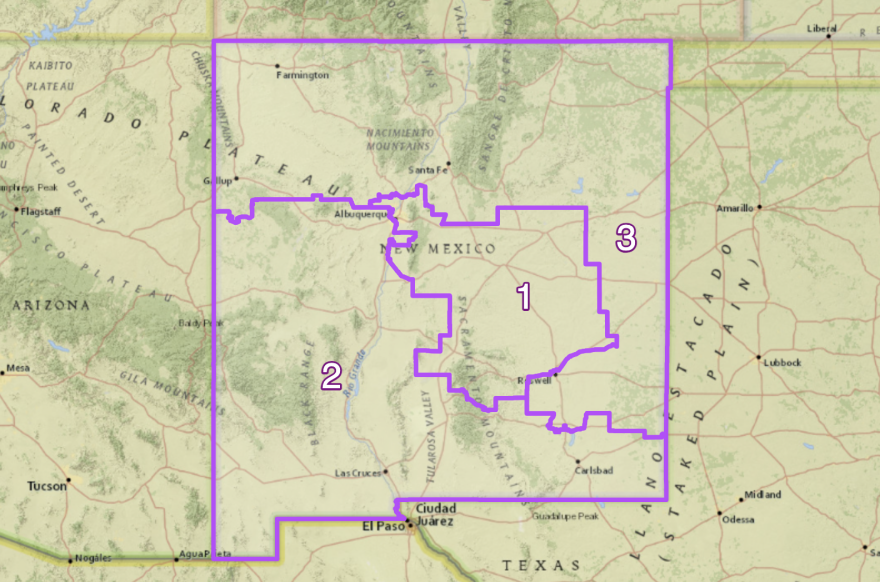New Mexico is the latest state to look to the courts to make a call on whether legislative maps were drawn fairly. A deadline is approaching for a district court here to decide whether the state’s new congressional map egregiously favors Democrats, as the state Republican Party argues. A group of non-partisan advocates and redistricting experts have submitted proposed guidance to the judge for making his decision.
Common Cause New Mexico, the League of Women Voters of New Mexico, Election Reformers Network and several redistricting experts filed the amicus brief with Ninth Judicial District Judge Fred Van Soelen Monday. It offers various tools he can use to answer questions posed in a three-part test for assessing gerrymandering claims. The test was first laid out by U.S. Supreme Court Justice Elena Kagan in her dissenting opinion in Rucho v. Common Cause.
The New Mexico Supreme Court last month ordered the lower court to use the test, which asks whether lawmakers intentionally tried to dilute the votes of their opponents, whether they succeeded and whether they have any nonpartisan justifications for where they drew the lines.
Dan Vicuña, national redistricting manager for Common Cause, said to back its answers to the test’s questions, “there is a range of evidence a court can use.”
That includes qualitative data like legislative documents and testimony.
Vicuña said that could mean asking questions like, “Were meetings held in secret? Did you see partisan votes in committees? Did you see secretive proceedings in which one party was boxed out of having any input?”
It also includes measurable evidence, like statistically analyzing the map. The authors proposed and even conducted these kinds of analyses in the brief, with mixed results.
They created a sample of 1,000 hypothetical congressional maps that comply with the state’s criteria without using partisan data. An analysis found over 90% of them had Democrats winning two of the state’s three seats — indicating that is by far the most likely outcome. The state’s actual congressional map, however, had Democrats winning all three.
“That’s a statistical outlier,” he said. “So that could definitely be evidence of partisan intent that the court will need to look at.”
However, another analysis proposed in the brief cut against the argument that Democrats politically gerrymandered the map.
It created a scenario where Democratic and Republican votes were tied, rather than using New Mexico’s actual election results, which favor Democrats. It found the state’s current congressional map was more likely than the independent maps proposed by the Citizen Redistricting Committee in 2021 to produce half Democratic and half Republican districts, better reflecting the one-person-one-vote principle.
Vicuña said the mixed results could mean the partisan intent suggested by the first test isn’t actually there, or that one test is potentially more appropriate than the other in evaluating New Mexico specifically.
“What it creates is just an opportunity for experts to provide a variety of evidence and give the court an opportunity to weigh those,” he said.
The judge has until Oct. 1 to decide the case.





